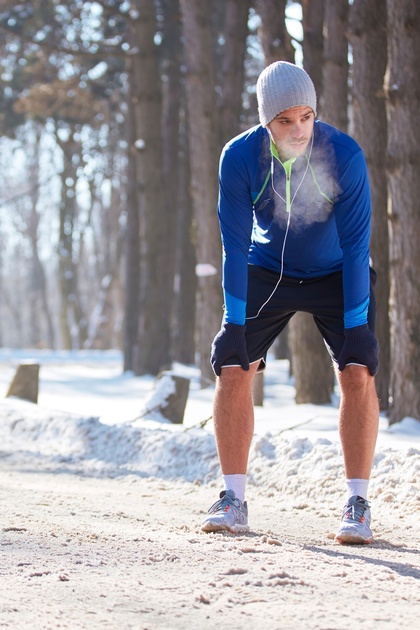
Should you limit your heart rate in winter?
The motto in the past was to only train with a low heart rate in winter. The view today is a little more relaxed.
Wintertime automatically means foundation training time for most summer athletes. At the end of the year, they initially recover from a year of strenuous training and possibly competitions, and then cautiously start training again.
But what does this mean in terms of heart rate? How high should or may it be during basic training? As beautiful as winter in the mountains may be in that it motivates you to undertake sporting activities, you can quickly find yourself exercising in (too) high heart rate zones. Particularly skating training in cross-country skiing or even strenuous snowshoe tours inevitably elevate the heart rate, especially since both sports are practised at high altitudes and not in the lowlands.
It is therefore all the more worthwhile to check your heart rate monitor from time to time and deliberately modulate your effort. When doing basic training, the focus is not on fast and intensive units, but rather on long and relaxed activities. Basic training is when the heart rate lies in a zone of around 65–75% of the maximum heart rate* (65% for cycling, 75% for running and swimming).
Build up your foundation
If you have a maximum heart rate of 170, for example, the basic heart rate in your case is 110 to 130, a zone that is reached very quickly. You should keep this in mind. For many, basic training units are «bad conscience training units», because they feel that the intensity is too light and not beneficial. If anything, basic training forms the foundation upon which higher intensities can be built and should be maintained accordingly during your preparation for the year ahead and conducted consistently over a longer period of time. As the motto goes: long is better than fast.
At the same time, variability is also recommended in winter. In the past it was virtually «sacred» to train at extremely low intensities over several months, however, in addition to basic training, you also need to incorporate units that cause your heart rate to shoot up. In order to avoid unnecessary stress on the respiratory tract during icy temperatures, you can, for example, use the roller or treadmill indoors and do intervals there. Working specifically on your athleticism (strength, speed, coordination, flexibility) is also explicitly recommended in the first months of a new season. Make sure you pay special attention to the timing to ensure a sufficient level of recovery after intensive units.
*The maximum heart rate is not always exactly the same but depends on your motivational level and form that day as to how much you can overexert yourself.
Foto: iStock.com
This may be of interest for you too


